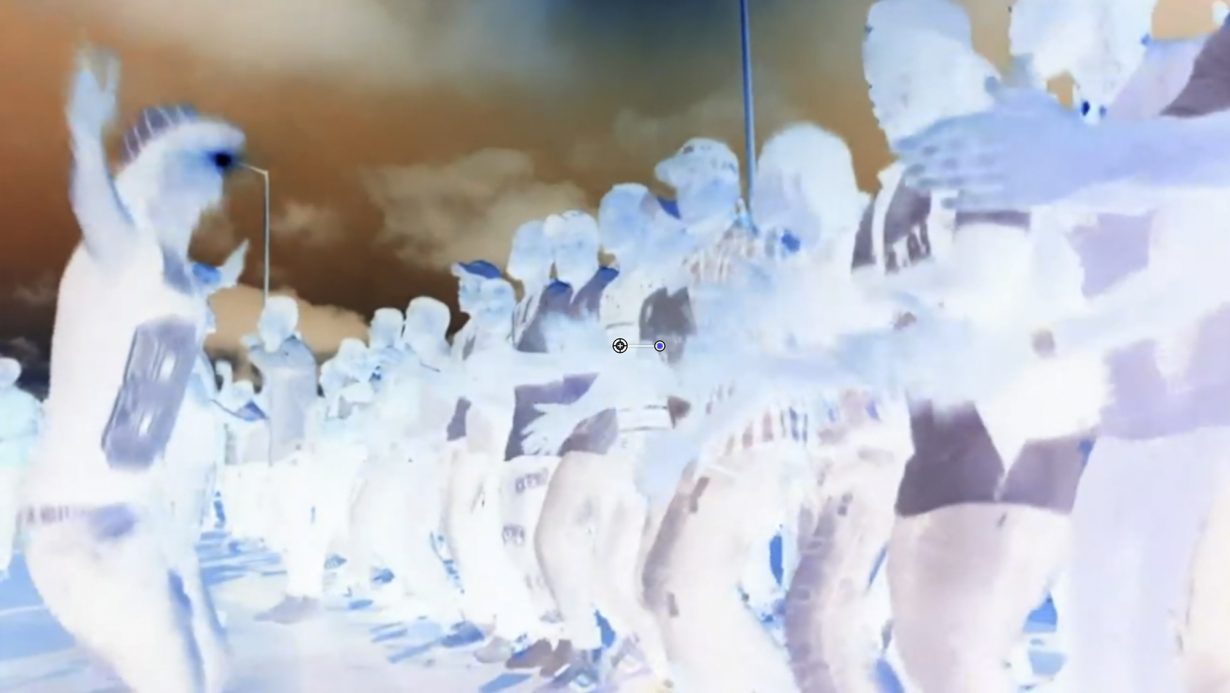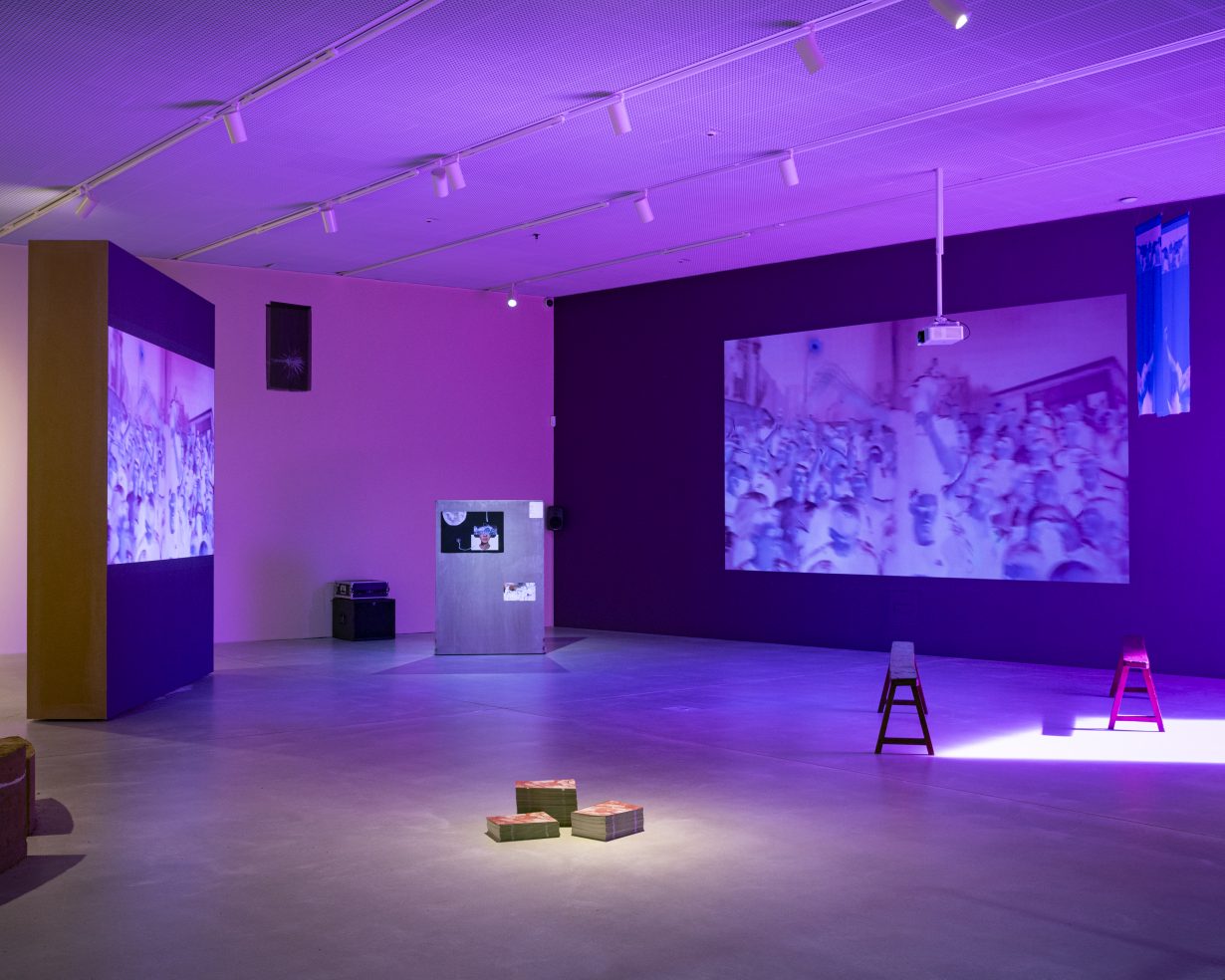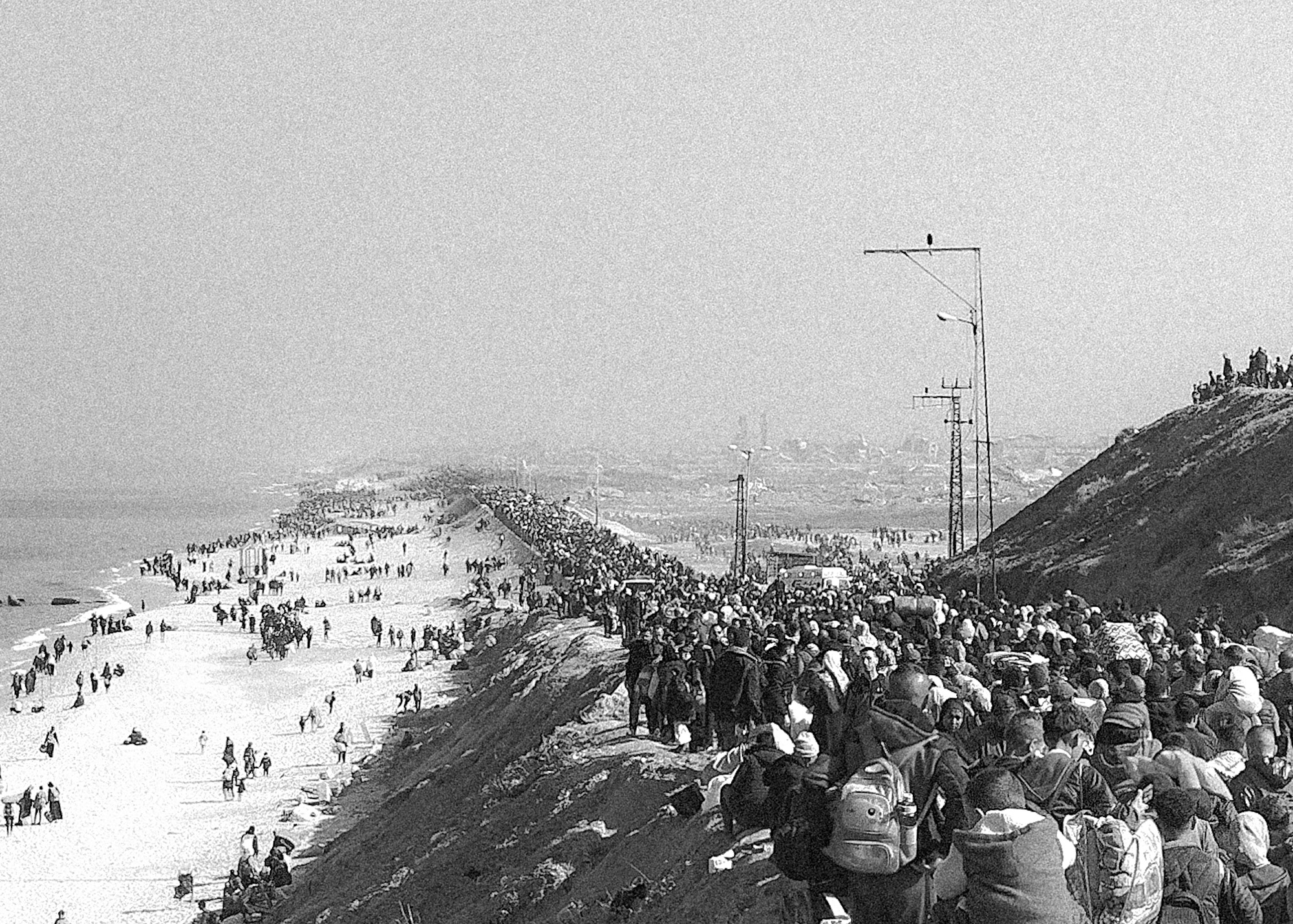A new group show and study programme at Berlin’s Spore Initiative reconnects the Palestinian story to the land: how it is experienced, remembered, worked, violated
In November 2024 a resolution in the German Bundestag made public grants for culture and science projects dependent on adherence to the International Holocaust Remembrance Alliance (IHRA) working definition of antisemitism, which equates criticism of Israel with antisemitism and effectively censors it. Artists including Jumana Manna, Emily Jacir, Candice Breitz, Johanna Hedva and Mohammed Al-Hawajri have all had exhibitions or talks cancelled for pro-Palestinian statements, in and outside of the gallery. Today’s artworld increasingly wants exhibitions to speak to the real world: to show solidarity with, and tell the stories of those who need it. Since the November resolution, against a backdrop of deportation orders for EU citizens and others participating in pro-Palestine protests, bans on Arabic at marches and multiple reports of police brutality against pro-Palestine supporters in Berlin, it seems as if the ability to have your story heard depends entirely on who you are.
Unsettled Earth, a new group show and study programme at Berlin’s Spore Initiative (funded in full by the Schöpflin Stiftung), tells the Palestinian story in relation to the land: how it is experienced, remembered, worked, violated. In Basel Abbas and Ruanne Abou-Rahme’s Until we became fire and fire us (2023), two video projections intercut archive footage of musical rituals from Iraq, Palestine, Syria and Yemen with poetic fragments of text and footage of plants indigenous to Palestine. The artists approach the warping and brutalising of Palestinian life by manipulating colour: both in the space, where a translucent purple sheet over a floor-length window casts a murky wash; and in the videos, which often invert images as if aping the thermal-imaging of scientific lenses or military equipment. The experience for the viewer is visceral and disquieting, rendering a distorted view of a people in the gallery. In Ahmad Alaqra’s I Died a Thousand Times (2024), a series of monochrome photographs depict the lifecycle of wild thistle plants, typical of central Palestine in spring and summer, like a botanical diary. In a photograph from Moayed Abu Ammouna’s Barzakh of Gaza (2024–25), a boy flies a kite over deserted earth near the blockade border. From Ammouna’s vantage, the kite appears higher than the checkpoint tower.


Geometry is a subtle visual theme here. Rectangular screens, like one showing Kamal Aljafari’s video UNDR (2024), about historical methods of filming quarries and archaeological sites, hang throughout the space – another (showing the Asphalt cooperative’s Mashaat, 2024, in which members discuss agrarian commons in the Palestinian past and a potential future) is angled on the floor against an array of mud-blocks; there are the layered frames-within-frames in Abbas and Abou-Rahme’s video projections, which visitors can watch from narrow wooden benches angled awkwardly across the floor. We move around the single-room gallery and notice the space cutting up. One of only two paintings in the show, Bayan Abu Nahla’s Airdrops (2024) casts in watercolour and ink a group of Gazans running out to an aid package floating in the shallow surf. The black outlines of two figures in the foreground overrun into the work’s white border.
Curated with great consideration by Joud Al-Tamimi and Lama El Khatib, the show’s most powerful moment is its quietest. Red Gold: A Dispatch from Beit Lahia (2024–25), which features copies of a short bilingual publication piled up under a spotlight in the middle of the floor, tells of farmer Yousef Sager Abu Rabee’s work, while studying agriculture, to grow strawberries in Beit Lahia. Business was so successful that they were referred to as ‘red gold’. Since the war razed his land, he has been coordinating efforts to provide and distribute necessities like flour and water under the ever-tightening Israeli blockade. In an interview in Red Gold, he describes ways in which the blockade has sabotaged Palestinian farming, redirecting rain- and freshwater (both essential for growing strawberries) away from their farms and releasing sewage water into the sea. The interview, we discover on the final page, is also a kind of eulogy: Yousef was killed eight months later by an Israeli drone strike, aged twenty-four. Where in Germany, the destruction of generations of human life is predominantly portrayed in passive language and statistics, Unsettled Earth is an astounding act of rehumanisation for a people who face erasure – of their lives, memory and emotionality – both in their land and in those of others.
Unsettled Earth at Spore Initiative, Berlin, through 28 February 2026
From the Summer 2025 issue of ArtReview – get your copy.
